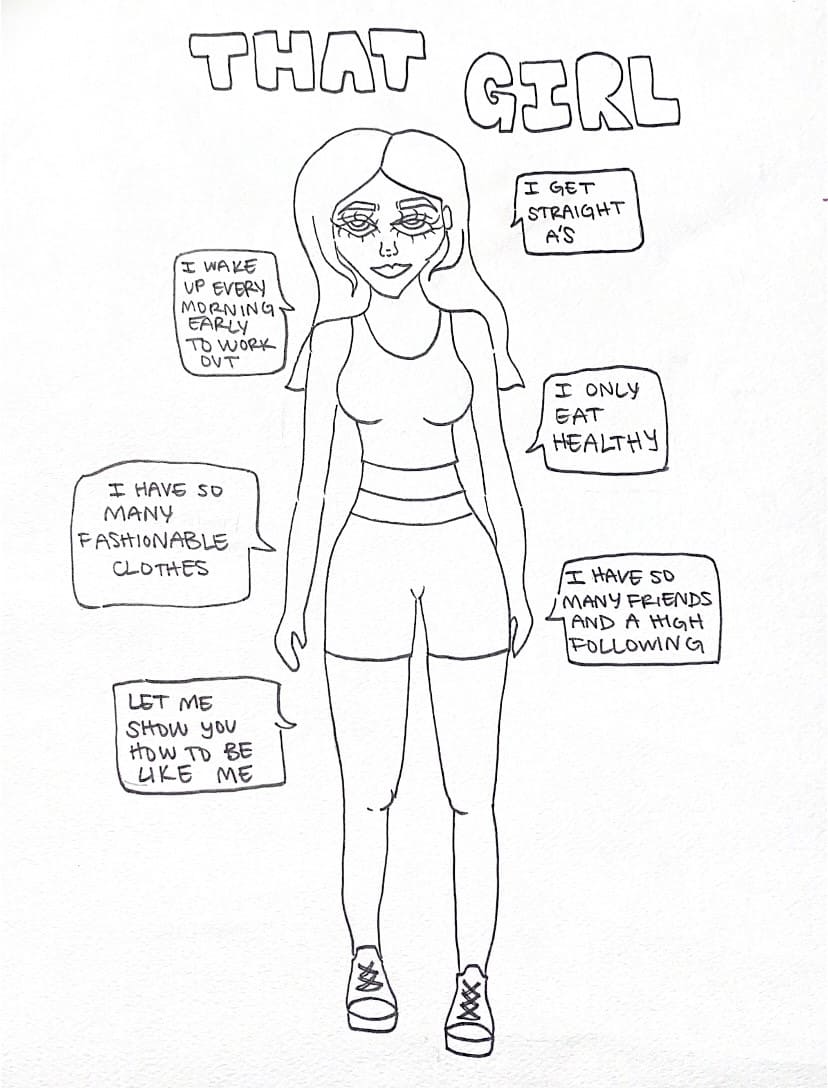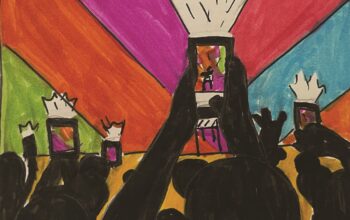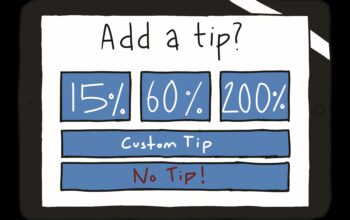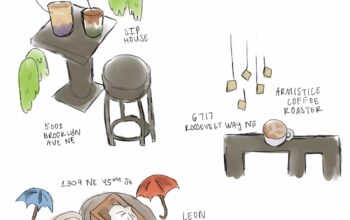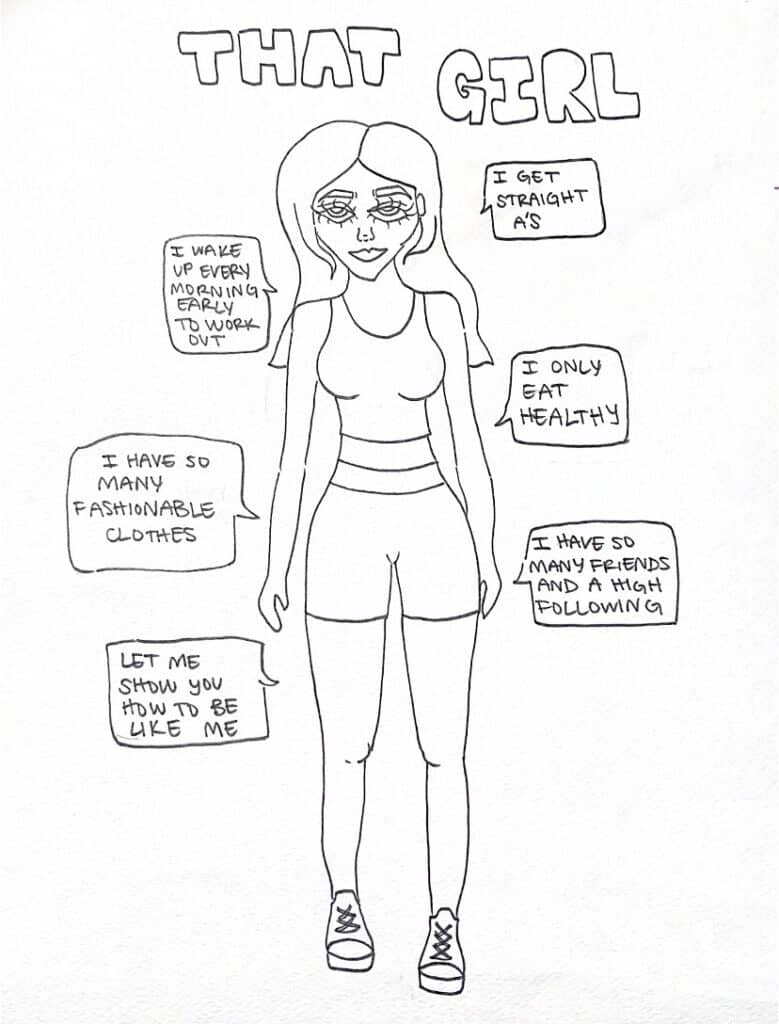
Scrolling through TikTok, you’re likely to see someone reference “that girl.” Whether it be a morning routine or a “what I eat in a day,” it’s clear every girl in America wants to be her. And why wouldn’t you? She absolutely has her life together. She works out in head-to-toe Lululemon apparel, and has the most extensive skincare routine.
“That girl” is supposed to be faceless. But is she? When we close our eyes and picture her, a specific image comes to mind. She’s skinny, she’s white, she hasn’t had a pimple in years, and her room is never messy. She wakes up at five in the morning to work out and eat a smoothie bowl. TikTok’s young audience engages heavily in this harmful health culture under the guise of a fun trend.
Throughout the pandemic, social media has proven its prevalence. Most notably, TikTok has become a vital part of youth culture. With a constant cycle of trends, impressionable young people are often swayed.
The impact of social media has been deemed harmful countless times. With the resurgence of the “that-girl” trend, one must wonder about its impact on our youth. People who participate can find themselves in a harmful cycle of using retail therapy every time they feel burnt out, and striving for unattainable ideals of beauty and womanhood.
This can cause young girls to actively participate in disordered eating habits without realizing it. Eating a smoothie bowl and a salad is not enough to support a growing body. And with 50% of teenage girls and 30% of teenage boys using unhealthy weight control behaviors, this trend has potential to fan those flames.
Fitness is a vital, and particularly harmful, aspect of this trend. Workout routines that expect teenage girls to do ab workouts for 30 minutes a day aren’t realistic. And when teens are spending so long focusing on how their bodies look for aesthetic reasons, disordered eating habits have room to blossom.
The self-care industry has reached its peak as an eleven-billion-dollar industry. And while it’s booming, we’re left to wonder if the industry is looking out for its consumers. Under U.S. law, businesses have a duty of reasonable care in producing and selling their products, but their primary obligation is maximizing profits for their owners.
“It’s an industry banking on privilege. A lot of this ‘self-care’ is only accessible with a lot of self-funding,” says Justina Sharp, lifestyle influencer and social commentator who writes a weekly self-care advice column on her Instagram. “That means that groups of people who need that care the most – young people, minority groups, women – feel like they can’t adequately participate and so may avoid it as a whole.” Leading women to believe they must be white, wealthy, and skinny is dangerous especially for TikTok’s predominantly young audience.
When looking at self-care as a commodity, it often can morph the way we view ourselves. “If we are constantly surrounded by imagery that is reliant on material items – jade rollers, expensive masks for every part of your body, weighted blankets – then there will always be people for whom self-care is an unaffordable luxury.”
Many Roosevelt students have mixed perspectives on the trend. One Roosevelt student reports, “I believe some parts of it [‘that-girl’ trend] can encourage people to take better care of themselves, mentally and physically. But I also believe it could make people feel like they could never be ‘that girl’ because they don’t live their life in ‘that way.’ Everyone uses/has different ways they take care of themselves, and all ways are valid!”
Another student says, “I really like it, it motivates me to get up early.” When asked all together if they think the trend has a negative or positive impact on mental health, responses were predominantly negative. 67% of polled RHS students say the trend has negative implications, and 33% say they believe the trend has positive implications. It’s necessary to strike a balance between allowing yourself to enjoy things while understanding that buying things is not the only way to make yourself feel better. It’s important for self-care habits to center you and your needs. And sometimes, that includes material goods. Buying yourself a bath bomb after a long week or a brownie when you’re sad isn’t immoral. But it also isn’t a solution. It’s important to remain aware of how social media affects you.
